
leica M9 . . . and its transition to the M type 240
Wolfgang Bleier
Austria, September 2010, updated in October 2013
In the past the German camera and optics manufacturer Leica AG took its own sweet time to develop new camera models only once in a while, particularly M-Leicas. This has changed in the age of digital cameras. Although Leica was the driving force behind 35mm film, which has revolutionized photography at the beginning of last century, since the nineteen-eighties M-Leicas could not keep pace with advanced mainstream cameras made in Japan. When digital sensors took over the world of photography at the end of the old millennium I thought that M-Leicas will soon be part of history. However, things turned out different and in 2006 Leica introduced its first digital rangefinder camera, the M8. Although in 2008 Leica's M8.2 tried to weed out some shortcomings of the M8, the necessity to use UV/IR filters to compensate the sensor's extreme infrared sensitivity and the 10,3 megapixel sensor, which applies a 1,33 crop factor on all lenses, remained somehow an awkward compromise. Only in 2009 Leica finally arrived in the full-frame digital world by introducing the M9 powered by the Kodak KAF-18500 CCD sensor, which has been specifically developed for the newly announced Leica M9.
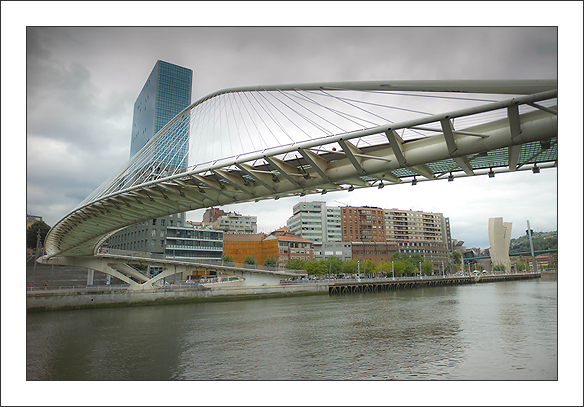
The swift technological progress in digital imaging and consumer electronics meanwhile results in such short product cycles that became annoying for several reasons. Extremely rapid drop in prices of second hand cameras is just one of them. When digital sensors took off to replace film I knew that that things will change. Meanwhile things have changed, and will continue to change in the annual technological contest. DSLR cameras are even bigger, heavier and faster than some years ago and got another twenty something of auto focus points, compact cameras have small sensors with more megapixels than they should have. Leica's digital M8 has evolved to the Leica M9, an uncompromising and yet simple, straightforward camera, and in 2013 Leica has introduced the "M Type 240" to the market with some additional features that many have missed on the M9.
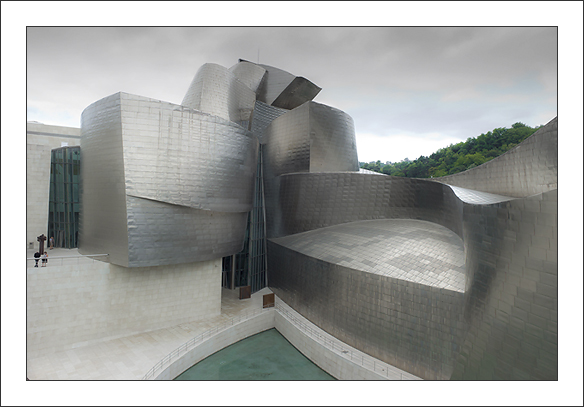
Haptic and perception
Unlike professional photographers, whose criteria for choosing equipment are obviously based on the commissioned work and the necessity to reliably deliver perfect results, the motivation of ambitious amateur photographers to decide for the one or other camera model seems to be more complex. Of course it is about the creation of personal work of art and the equipment that suits best, but amateur photographers can take pictures of almost anything they find interesting or visually attractive, however, by using a limited range of equipment. It may be about shooting sport or wildlife at high frame rates in auto exposure and dynamic AF mode, or the careful composition of landscape images while being in full control of the entire process of taking a photograph. Thinking of my personal preferences it is mainly the latter. In fact I was rarely in a situation with my Nikon F5 ("the beast"), in which I had to fire 8 frames per second in dynamic AF tracking mode. Certainly there are also those amateur photographers who need (or just want) such performance, but the majority I think wants their images carefully composed or go out for spontaneous street photography, and that's the domain of a Leica M.
The Leica M9, as the M, is among the smallest full-frame cameras, and even though it is all-metal and built like a tank it weighs half of a DSLR with a decent lens. Although it is comfortable to hold, ergonomic design is practically absent as with any classic M Leica, unless the optional handgrip is fixed on the body. Just as the M9, the M Type 240 is built to perfection. By just holding the body one can feel its excellent quality. All controls feel very solid and work precise, not to mention the superb M lenses. There is one thing all M Leica's have in common: it is a real pleasure to use any of them.

In spite of the fact that I grew up with film - and still love to take photographs on film - it happened in 2010 that I have picked up a Leica M9, which I have meanwhile traded against a Leica M Type 240. Well, it seems that in my old age I became more open-minded, perhaps also a bit lazy. I liked the M9 very much and now I'm very happy with the M. Among professional digital cameras it is the most consumer friendly camera I ever experienced, side by side with my "old" Nikon film cameras. Both, the M9 and the M Type 240 are professional full-frame digital cameras, which still feature photography as a careful process because they are not crammed full of questionable gimmicks. Both cameras force you to think of the photograph before you take it. This kind of quality is an essential statement of both, the M9 and the M Type 240. Both are as puristic as in my opinion a camera should be. Everything one needs has a dedicated control, and everything one doesn't need simply isn't there. The menu is limited to the essentials in a single level menu, every menu item is a menu item without breaking up into several menu banks. A Leica M is a high-grade camera that weighs so little that it can come with me everywhere at any time. I can take it even to dinner and not look odd, quite to the contrary, a Leica looks posh. Whether it is film or digital, M-Leicas are demanding, serious cameras, which insist that I, the photographer, take care of the focus, exposure and aperture, thus the depth of field. Thank you Leica for letting me take my photographs.
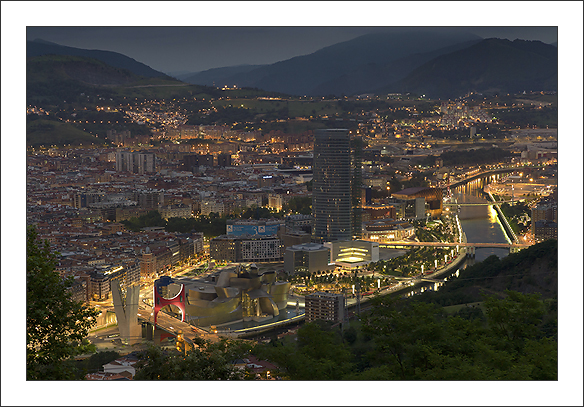
Features & Specifications
As every camera, the Leica M9 as well as the M have advantages and disadvantages. Let's start with the advantages. M-Leicas are among the smallest and lightest full-frame digital cameras available these days. The body is unobtrusive, classic design. It is a quiet, all-metal camera built for utmost mechanical reliability under adverse conditions, but weighs only a bit more than 500 grams. Just as every M-Leica you can bring it wherever you like and not look strange like with a bulky DSLR. The M9 (which in 2013 became the Leica M-E) has a 18 MB Kodak CCD sensor and combined with far superior optical lenses - whether it is a lens from 1960 or a brand new one doesn't matter - it will give you excellent results as long as ISO is limited to 800. With its first rate image quality it is - in my honest opinion - among the very best in its class, especially for travel, street and landscape. From an overall perspective the newer M Type 240 with its new CMOS sensor surpasses the image quality of the M9 / M-E particularly due to lower noise at higher ISO rates.
 Some argue that the M9's CCD sensor had a more pleasing tonality, which to me is is a subjective argument. The M Type 240 delivers slightly different, but great image quality. Not only that the Leica M Type 240 is a great digital rangefinder camera, it is the most important digital camera by Leica since long.
Some argue that the M9's CCD sensor had a more pleasing tonality, which to me is is a subjective argument. The M Type 240 delivers slightly different, but great image quality. Not only that the Leica M Type 240 is a great digital rangefinder camera, it is the most important digital camera by Leica since long.
Let's come to the disadvantages now, as there are a few. Compared to modern DSLR's digital M cameras work rather slow, which doesn't bother at all as long as you don't shoot action. The frame rate is slow (M9 2 fps and M 3 fps) compared to modern DSLR, and if you are lucky the buffer takes 8 frames in series and a few more in the M Type 240 before it starts to slow down. It takes considerable time to format a 16 GB SD-card with an M9, in this respect the M Type 240 is much faster and on level with professional DSLR's that can do this within a few seconds. Simply put, M-Leica's are not made for people who are in a hurry, they are made for aficionados who can enjoy the moment and life's simple pleasures. High ISO is another weak spot of the M9, first of all because of its limited sensitivity of only ISO 2500 and noticeable noise above ISO 800. Above ISO 800 image quality dropped off considerably, with ISO 1200 not usable. This has been considerably improved in the M Type 240 by its excellent CMOS sensor with a maximum of ISO 6400 and much less noise at high ISO. The new M can climb to ISO 1600 without losing its color integrity, and even if there is a drop in quality it is in many situations graceful up to ISO 3200. I had my M9 set to an Auto-ISO maximum of ISO 800 and now the M Type 240 to ISO 1600, nevertheless I use a tripod whenever I can. Beyond such ISO values noise is a serious issue where the M9 clearly looses against Nikon's and Canon's flagships, but the new M Type 240 is state-of-the-art and on level with the best low light performers.
The shortest flash sync-time of both, the M9 and the M Type 240, is 1/180s or slower in auto and manual exposure mode. Unfortunately the M9 does not support high-speed flash synchronization (HSS) while the M Type 240 does. This allows daylight fill-flash at sync-times shorter than 1/180 sec up to 1/4000s, for example with the SF58 flash unit set to TTL-HSS mode. Both cameras come with the brilliant menu option to set the sync-speed to auto-slow-sync, for example at 1/focal length of the lens or another slowest sync speed set in the menu, which in dim light gives more weight to the ambient light.
Occasionally I noticed that automatic white balance and colors can be tricky in certain situations with difficult light. In this respect the M Type 240 was also considerably improved compared to the M9 and since the firmware update 2.0.0.11 in October 2013 it is almost perfect. The 230.000 pixel 2,5 inch LCD monitor is simply beneath the overall quality of the M9, to look at the bigger and much better monitor of the new M is a pleasure without alloy. Most cameras in the price range of an M9 have about 900.000 pixel on 3 inch monitors, and the price of the M9 should have justified such LCD resolution and a monitor screen made from special tempered glass. After all, the M9 was a quite costly affair. Leica made it up with the new M.

Why a digital M-Leica?
For several years I considered to buy a semi-professional digital SLR camera, but luckily I have made experience with Nikon's F5. Don't get me wrong, the F5 is a fantastic SLR, if only it was not that big and heavy. Lately I bring my F5 only when traveling by car, if at all. With Nikon's (as well as Canon's) DSLR cameras things became even worse, the overloaded menus of such cameras are - in my opinion - ridiculous. By using a Leica M7 I have realized the tremendous advantage of a small, lightweight and yet professional rangefinder camera, which turned my plan to buy a DSLR completely upside down, and finally helped me to make a good decision in favor of a digital M.
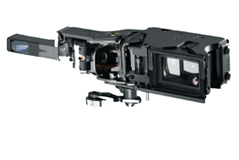 Just its compact dimensions and relatively little weight, combined with superior image quality, are simply outstanding features that compensate for any disadvantage I made out.
Just its compact dimensions and relatively little weight, combined with superior image quality, are simply outstanding features that compensate for any disadvantage I made out.
Taking pictures with a digital M feels like shooting with earlier analog M-Leicas, and these feel great. The only thing I miss is the film advance lever, not only for good old times sake but also to hold the digital M more safely. Compared to Nikon's F5 rubbery body, which virtually sticks to my hand, a Leica M body is more difficult to hold due to complete absence of ergonomic design. And since most owners of M-Leicas like the classic way it is built and certainly wouldn't like to have this changed, they are well-advised to keep the carrying strap always around their neck. Digital M-Leica's are not stuffed full of electronic complication or digital junk features. There is nothing to spoil the act of photography, which remains about the scenery, image composition and exposure by using the most evolved optical performance and mechanical reliability. At the same time a Leica M never forgives mistakes. Even at first-rate optical quality, it sets back its owner to his or her real photographic skills. If these are poor, no face or animal recognition feature will secretely compensate for it, and nothing of its software will smooth out deficiencies of the photographer. If not set correctly the M produces junk. A Leica M is a merciless tutor on the way from a point-and-shoot amateur to a photographer.
In addition to manual exposure setting with shutter speeds between 8s and 1/4000s in half increments, the Leica M features also aperture priority auto mode with infinitely variable shutter speeds and exposure memory lock by pressing the shutter release half-way down. This allows you to focus easily, meter and re-compose quickly, and thus devote the full attention to taking the photograph. Owners of modern DSLR cameras may believe me or not, everything more than that is a non-issue in 90% of real world photography, but a lot more weight to carry. Those who for example have worked with the fantastic Nikon F3 SLR in the eighties or nineties will for sure agree. I did - and I still love the F3 very much for its simplicity.
As other M-Leicas the digital M displays bright-line frame combinations according to the focal length of the lens. The M9 did this by the classic optical system, in the M Type 240 it was replaced by LED frame lines, which in fact work better and can be set-up in either white or red color. A major improvement from the M9 to the M Type 240 is the live-view mode, focus assist with focus peaking and the advanced exposure mode, which now features also multi-field and spot metering. For most situations, however, the center weighted metering mode does an excellent job and I leave it this way in order that the shutter stays closed most of the time. More details about the Leica M Type 240 and its features you will find in the specifications below.
Last but not least: for "autofocus" simply use your finger to turn the smooth focus ring until two small superimposed images merge as one. It's so easy and quick to bring the lens in perfect focus.
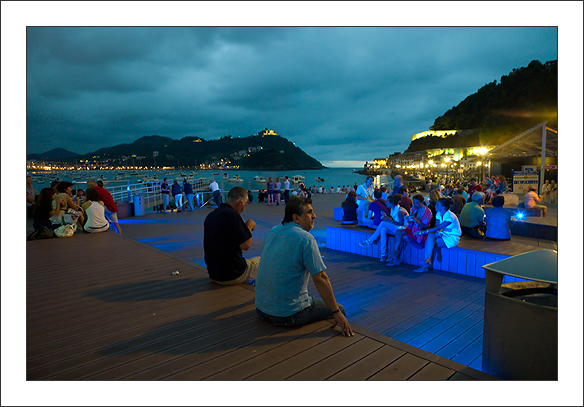
As to the fundamental differences between rangefinders and SLR viewfinders, their advantages and limitations, you will find more information on my Leica M7 page. There the differences are outlined in detail, which are exactly the same in respect of digital M-Leicas.
Finally, be warned that one of the key features of rangefinder cameras can end in a big embarrassment for newcomers: while you can nicely view the uninterrupted, sharp image all the time when you compose your image, you won't see if the lens cap is still on. But don't worry, friendly people standing nearby will tell you, and people in bigger distance will show hand gestures to you - I went through this when first time using my M7. My tip to get out of it nicely: keep a low profile, try not to blush and pretend that you were just metering the light according to the Zone System by Ansel Adams.
Good luck!
| Specifications - M9 | |
Model |
Leica M9 |
Production period |
2009 - 2012 |
Camera type |
digital rangefinder system camera |
Focus control |
Manual (optical system) |
AF area modes |
- |
Viewfinder |
Large, bright viewfinder with automatic parallax compensation. Viewfinder optical system with reduced stray light sensitivity. Bright lines activated in pairs and automatically displayed according to the lens mounted. Magnification 0.68x |
Exposure metering |
TTL, center weighted working aperture exposure metering system |
Metering range |
(at ISO 160) EV 0 to EV 20, which corresponds to f/1.0 and 1,2s to f/32 and 1/1000s, flashing of left triangular LED indicates values below metering range |
Exposure modes |
Aperture-priority auto control (A), manual exposure control (M) |
| Exposure compensation | Via menu, –3 EV to +3 EV in 1/3 increments |
Auto exposure memory lock |
by pressing shutter release halfway |
Shutter |
microprocessor controlled vertical-travel metal focal-plane shutter |
Shutter speeds |
Automatic mode: 32s to 1/4000s (infinitely variable) Manual mode: 8s to 1/4000s (in half increments) Bulb (B) for time exposures, or (T) in combination with self timer |
Sensor sensitivity range |
ISO 160 to ISO 2500, auto or manual setting in 1/3 increments Pull ISO 80 |
Image sensor |
Kodak KAF-18500 CCD chip (full-frame) 18,5 Megapixel, active area 23,9 x 35,8 mm no anti-alias (moiré) filter for better image quality 0.8mm integral IR-cut filter Image processing module (DSP): Jenoptik |
Data format / file size |
DNG raw data compressed/uncompressed, JPEG 2 compr. levels DNG: 18MB / 36MB, JPEG approx. 2 - 10 MB |
Color spaces |
Adobe RGB, sRGB |
White balance |
Auto, manual, 7 pre-sets, color temperature setting |
Storage medium |
SD cards up to 2GB, SDHC cards up to 32GB |
Buffer |
max. 8 frames in series |
Menu language |
German, English, French, Spanish, Italian, Japanese, traditional and simplified Chinese, Russian |
Compatibility |
Mac OS X, Windows XP, Vista, Win7 |
Shutter cocking |
low-noise integral motor, frame rate: single, or 2fps at ISO 160 and compressed DNG |
Shutter release modes |
Standard (1. meter on, 2. meter memory lock, 3. shutter release) Discrete (delayed advance after taking finger from shutter release) Soft (release of shutter at earlier detent for less camera shake) |
Viewfinder display |
automatic LED brightness control Flash status Exposure compensation warning Shutter speed (in automatic mode) Indicators for manual exposure control Auto exposure memory lock indicator Overexposure and underexposure indication Remaining seconds for exposure times slower than 2s Progress counter of expired exposure time in bulb mode |
Flash unit connection |
ISO-Standard accessory shoe |
Flash synchronization |
1/180s at flash sync-time or slower in auto and manual exposure mode |
| Flash exposure metering | TTL (center weighted) pre-flash metering |
Flash sync modes |
Synchronization with 1st (front) or 2nd (rear) shutter curtain |
Rear panel |
2,5" TFT LCD color monitor, 230.000 pixel |
Live view |
no |
Depth of field preview |
- |
Self timer |
12s or 2s, indicated at camera front |
Multiple exposure |
No |
Interface |
5-pin mini USB 2.0 socket |
Power |
1 Li-Ion rechargeable battery, 3,7V, 1900 mAh |
Dimensions and weight |
139 x 37 x 80 mm, 585 g (body with battery) |
Other features |
Frame selector to view frames which do not correspond to the lens actually fitted to the camera |
Included accessories |
Charger 100V - 240V with 2 mains cables (EU / USA) 1 car charger cable 1 Li-Ion rechargeable battery 1 USB cable 1 carrying strap |

| Specifications - M Type 240 | |
Model |
Leica M (Type 240) |
Production period |
2012 - 2019 |
Camera type |
digital rangefinder system camera |
Focus control |
Manual (optical system or live view with focus assist/peaking) |
AF area modes |
- |
Viewfinder |
Large, bright viewfinder with automatic parallax compensation. Viewfinder optical system with reduced stray light sensitivity. LED illuminated frame lines (white/red) activated in pairs according to the lens mounted. Magnification 0.68x |
Exposure metering |
TTL, center weighted, multi-field and spot metering Working aperture exposure metering system |
Metering range |
(at ISO 200) EV 0 to EV 20 at aperture 32 Flashing of left triangular LED indicates values below metering range |
Exposure modes |
Aperture-priority auto control (A), manual exposure control (M) |
| Exposure compensation | Via menu, –3 EV to +3 EV in 1/3 increments |
Auto exposure memory lock |
by pressing shutter release halfway |
Shutter |
microprocessor controlled vertical-travel metal focal-plane shutter |
Shutter speeds |
Automatic mode: 60s to 1/4000s (infinitely variable) Manual mode: 8s to 1/4000s (in half increments) Bulb (B) for time exposures (max. 60 s.) (T) for long time exposures in combination with self timer |
Sensor sensitivity range |
ISO 200 to ISO 6400, auto or manual setting in 1/3 increments Pull ISO 100 |
Image sensor |
CMOS chip, full-frame, made by CMOSIS/STMicroelectronics 24 Megapixel, active area 23,9 x 35,8 mm Video/movie: 1080p, 720p, 640*480 (VGA) no anti-alias (moiré) filter for better image quality Image processing: Maestro processor (based on Fujitsu Milbeaut) |
Data format / file size |
DNG raw data compressed/uncompressed, JPEG 2 compr. levels DNG: 20 - 30 MB / 48,2 MB, JPEG depending on resolution |
Color spaces |
Adobe RGB, sRGB |
White balance |
Auto, manual, 7 pre-sets, color temperature setting |
Storage medium |
SD cards up to 2GB, SDHC cards up to 32GB, SDHX cards |
Buffer |
max. 12 frames in series |
Menu language |
German, English, French, Spanish, Italian, Japanese, Traditional and Simplified Chinese, Russian |
Compatibility |
Mac OS X, Windows XP, Vista, Win7 |
Shutter cocking |
low-noise integral motor, frame rate: single, or 3fps at ISO 200 and compressed DNG |
Shutter release modes |
1. meter on, 2. meter memory lock, 3. shutter release |
Viewfinder display |
automatic LED brightness control Flash status Exposure compensation value (during setup) Exposure compensation warning (flashing) Shutter speed (in automatic mode) Indicators for manual exposure control Values beyond metering range warning Auto exposure memory lock indicator Overexposure and underexposure indication Buffer full indication No SD card loaded indication SD Memory card full indication Remaining seconds for exposure times slower than 1s Progress counter of expired exposure time in bulb mode |
Flash unit connection |
ISO-Standard accessory shoe |
Flash synchronization |
1/180s at flash sync-time, or slower in auto and manual exposure mode up to 1/4000s in TTL-HSS mode with SF58 flash unit |
| Flash exposure metering | TTL (center weighted) pre-flash metering |
Flash sync modes |
Synchronization with 1st (front) or 2nd (rear) shutter curtain |
Rear panel |
3" TFT LCD color monitor, 921.600 pixel, 16 million colors Protective Corning®Gorilla®Glass |
Live view |
yes |
Depth of field preview |
permanent in Live View |
Self timer |
12s or 2s, indicated at camera front |
Multiple exposure |
No |
Interface |
Accessory sockets for EVF2 viewfinder and Multifunction Handgrip |
Power |
1 Li-Ion rechargeable battery, 7,4V, 1800 mAh |
Dimensions and weight |
138,6 x 42 x 80 mm, 680 g (body with battery) |
Other features |
Video recording (24 / 25 / 30 fps), Motion JPG, Quicktime Audio recording |
Included accessories |
Charger 100V - 240V with 2 mains cables (EU / USA) 1 car charger cable 1 Li-Ion rechargeable battery 1 carrying strap |
Optional |
Multifunction M Handgrip (incl. SCA port, USB interface and GPS) SCA adapter set (support rail w. cable, requ. multifunction M handgrip) Flash units SF24D, SF26, SF40, SF58, SF64 USB cable Electronic viewfinder EVF2 Microphone adapter set R-Lens adapter for Leica R lenses Novoflex lens adapter for various brands |